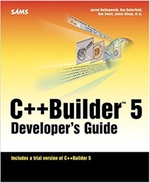Detecting OpenWhisk web actions
I've already written about OpenWhisk web actions and how they allow you to send a status code and HTTP headers to the client by returning a dictionary with the keys status, headers and body from your main() method: func main(args: [String:Any]) -> [String:Any] { return [ "body": "Hello world", "statusCode": 200, "headers": [ "Content-Type": "text/xml", ], ] } If this test action is in the default namespace, then we create it with wsk action update… continue reading.


